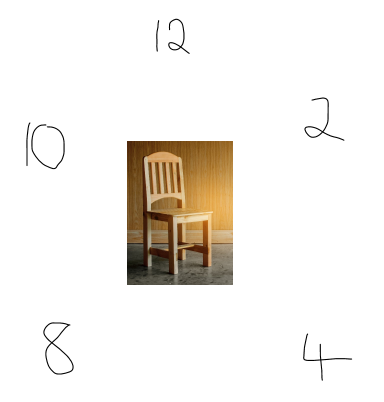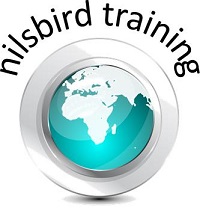This new post focuses on some practical steps I took to support the students understanding of how to tell the time.
I have always been a great believer in kinesthetic learning; students actively engaged in their learning (as opposed to focusing on a particular style of learning because a student is deemed to learn best in that way). I have always felt that if you can immerse a student in an activity, it will very likely support their understanding.
With the above in mind, I tried a couple of ideas, both based around the students having to visualise the layout of a clock on a carpet. For example, for some students (either because of their age or ability) that were just learning about the clock face/I was just trying to consolidate understanding, I placed a chair/stool on the carpet and said it was the centre of a clock. I then asked them to sit/stand at particular numbers, having told them where 12 was. To do this, they had to visualise where the numbers would be. So, for example, students were asked to stand at 2, 4 8 and 10.

I then asked questions, such as, who is standing at 10? Or asked a student to go and stand where 7 would be. To make the activity slightly harder, I would remove the chair so that the students lost a point of reference.
My other idea was to ask the students to stand, individually, on a carpet; all facing in the same direction which was 12. I then gave them instructions, such as, turn through a 1/4 of an hour, clockwise, and then asked, where are you facing? Or, turn through 1/2 an hour, anticlockwise, and then asked, where are you facing?
This second activity opened up a lot of possibilities for the content of questions/extension material. For example, students could start the activity facing, for example, 4 and then be asked to turn/say where they were facing. Or the amount of turn could cover all the factors of 60 – 1/2, 1/3, 1/4, 1/5, 1/6, 1/10, 1/12, 1/15, 1/20, 1/15 and 1/60; plus multiples of these, for example, turn through 5/6, or 37/60, of an hour. (This got even harder if you asked students to turn through, for example, 3/8 of an hour, or 17/12 of an hour.)**
** We must not forget that minutes, as well as fractions of an hour, will all be part of this work as well.
The responses the students had to give to questions, such as, where they were facing, were certainly challenged, if they had to clearly describe where they were positioned after a challenging turn. So, here is a particular scenario:
Teacher: “Ok. Let’s move to the carpet.“
Teacher: “Everybody find your own space. Face the green wall. That’s 12.“
Teacher: “Turn to face 3.“
Teacher: “Ok. Turn through 3/5 of an hour anticlockwise. Where have you ended up?“
Student: “21 mins to the hour.“
Teacher: “Great. That’s correct.“
Teacher: “Can anyone describe where they are facing in a different way?“
Student: “1 min before the 8.“
Teacher: “Yep! That’s correct.“
Now, maybe you can begin to see why I said in my introduction to this series: “The journey I have made has made me realise how telling the time can be taught and all the mathematics that can actually be taught using a clock!“
Whilst trying out these practical activities, things such as fractions, were beginning to play an important role. As a result, I decided to focus on fraction understanding, as well as time, but that is another story!
When considering the use of fractions when telling the time, factors/multiples/primes, as well as the manipulation of fractions, can also play their part. So, the scenario above could become:
Teacher: “Ok. Let’s move to the carpet.“
Teacher: “Everybody find your own space. Face the green wall. That’s 12.“
Teacher: “Turn to face 3.“
Teacher: “Ok. Turn through 4/5 of an hour anticlockwise. Where have you ended up?“
Student: “27 mins past the hour.“
Teacher: “Great. That’s correct.“
Teacher: “Can anyone describe where they are facing in a different way?“
Student: “2 mins past the 5.“
Teacher: “Yep! That’s correct.“
Teacher: “Now. Turn 2/3 of an hour clockwise. Where have you ended up?“
Student: “7 mins past the hour.“
Teacher: “Can anyone describe where they are facing in a different way?“
Student: “2 mins past the 1.“
Teacher: “Yep. That’s correct.“
Teacher: “So, what do you think we have just done? What calculation have we done?“
Student: “4/5 – 2/3.“
Teacher: “Great. So, where’s the answer to this calculation? Where can we find it on our clock?“
Student: “How far we would turn anti-clockwise from 3 to where we ended up – 8 mins.“
Teacher: “Great! Can anyone say what fraction this 8 mins is? A clue is: it’s 8 mins out of 60.“
Student: “8/60. I think, cancelled down, it’s 2/15.“
Teacher: “Yep! If we did 4/5 – 2/3, we’d get 2/15.“
I agree the above is a little contrived, but I hope you get the idea!
Other topics that could be integrated with clocks are angles (not just values but names, such as, right-angle and acute), transformations (for example, if the line of reflection is from 12 to 6, what is the reflection of 4 o’clock?) and multiplication tables (Hopefully this last one will be talked about in another blog post.)
That’s it for now. My next post will talk about further written work I did with clocks.
Don’t forget, via supportforteachers.com, you can find out all about the online teacher training conference, Educating the 21st Century Student, 26th to 28th August 2021.
David
nilsbird training
